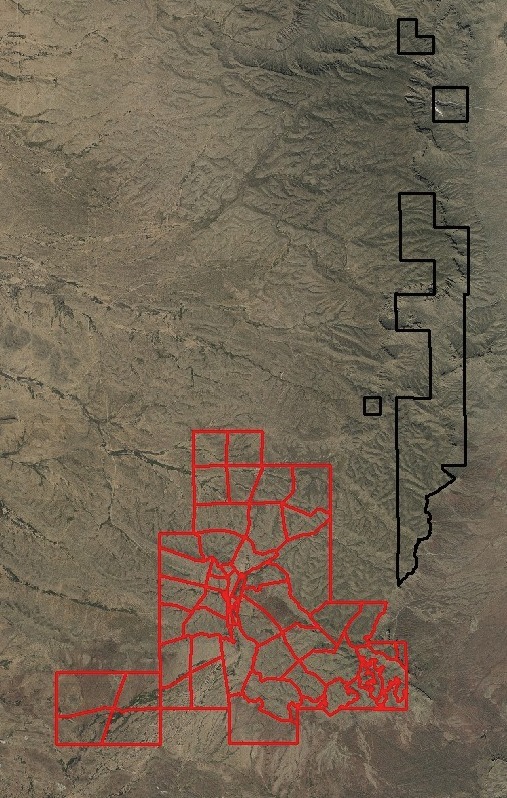Sierra Diablo Management Plan Containing Comments from Christopher Gill

Cooperation: This satellite photograph (below, not above) shows the Sierra Diablo Wildlife Management Area outlined in black, and Circle Ranch in red. Circle is triple the size of the WMA.

These two properties, and the others that adjoin the very long and narrow WMA, should be managed cooperatively. This is stated many times in the Plan’s objectives, but not in its practices.
Bad Range Science:The practices in this Plan show why, in range and wildlife practice, poor outcomes across our Southwestern deserts stand in disappointing contrast to excellent objectives formulated by highly-respected scientists. The Plan does not build on an understanding that desertification is the inevitable result of biodiversity loss. Because of its misunderstanding of overgrazing, its unawareness of over-rest and its consequences, the Plan’s practices harm plants and therefore, habitat health. Large animal removals add to this. There is no consideration of symbiotic soil life which is no doubt harmed along with plant and animal communities.
Fifty-Year-Old Thinking: American range and wildlife scientists and our institutions remain watertight to these basic range insights 50 years after their discovery. In contrast, many range scientists in the third world are far advanced in comparison, because unlike their American colleagues they have incorporated this knowledge.
Fragmentation: The Plan is fragmentational, and simplistic. That which is so complex is confidently addressed as if it were simple: managing for one species, and using the rifle and rest as the two major tools.
Elk Eliminations: Removals and management of various species including elk are undertaken without consultation, or knowledge, of most affected parties including at times key Department staff. On April 29, 2010 Wildlife Division Director Clayton Wolf told me the elk policy had been “revised,” but after several follow-up questions said, “There is a change of words in the Plan but no material change to any practice at any Department-managed property.”
All elk will be shot on sight. After review, this is the written policy at every Department-managed property in far-West Texas.
This is a terrible mistake.
